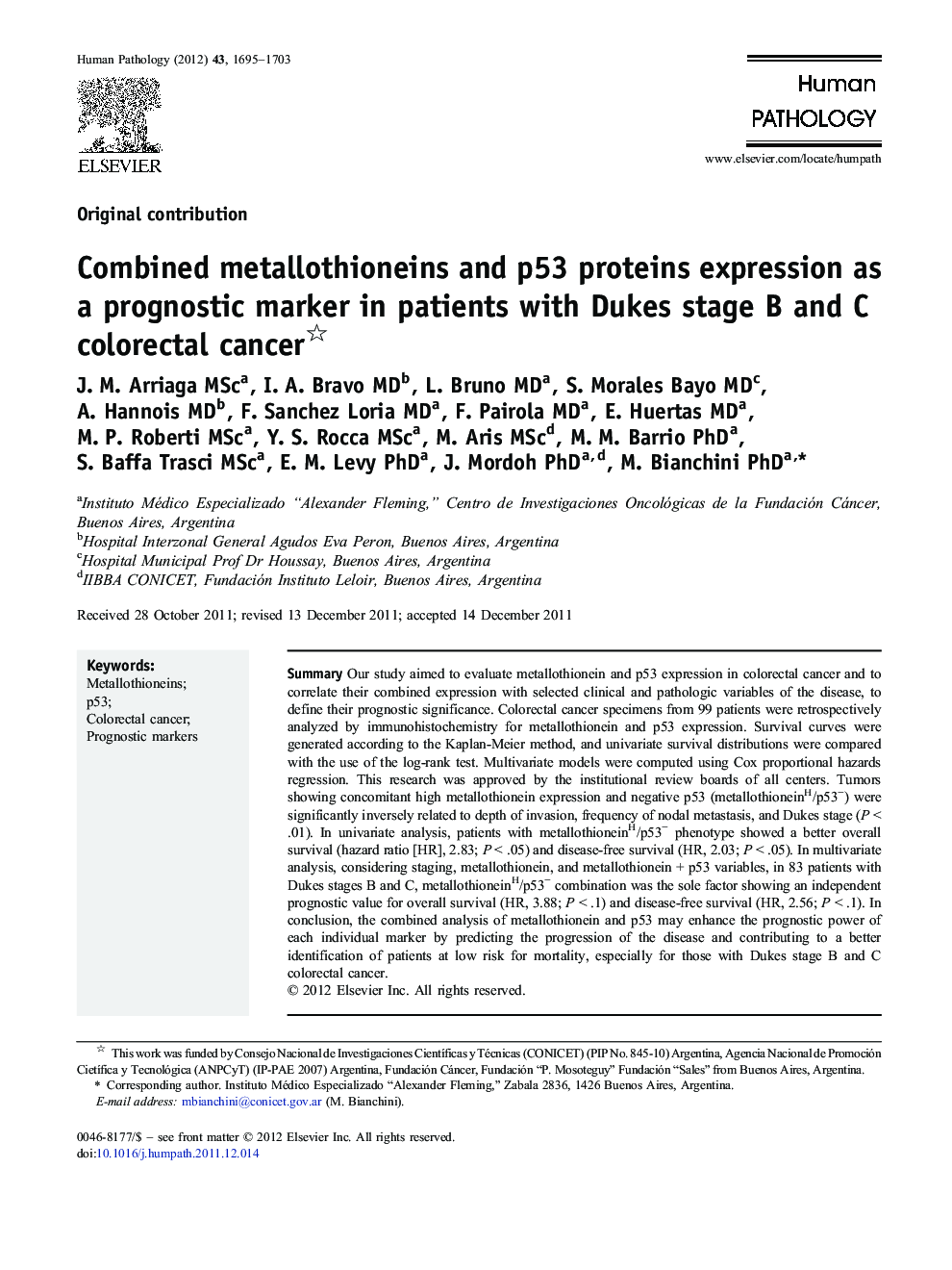| Article ID | Journal | Published Year | Pages | File Type |
|---|---|---|---|---|
| 4133135 | Human Pathology | 2012 | 9 Pages |
SummaryOur study aimed to evaluate metallothionein and p53 expression in colorectal cancer and to correlate their combined expression with selected clinical and pathologic variables of the disease, to define their prognostic significance. Colorectal cancer specimens from 99 patients were retrospectively analyzed by immunohistochemistry for metallothionein and p53 expression. Survival curves were generated according to the Kaplan-Meier method, and univariate survival distributions were compared with the use of the log-rank test. Multivariate models were computed using Cox proportional hazards regression. This research was approved by the institutional review boards of all centers. Tumors showing concomitant high metallothionein expression and negative p53 (metallothioneinH/p53−) were significantly inversely related to depth of invasion, frequency of nodal metastasis, and Dukes stage (P < .01). In univariate analysis, patients with metallothioneinH/p53− phenotype showed a better overall survival (hazard ratio [HR], 2.83; P < .05) and disease-free survival (HR, 2.03; P < .05). In multivariate analysis, considering staging, metallothionein, and metallothionein + p53 variables, in 83 patients with Dukes stages B and C, metallothioneinH/p53− combination was the sole factor showing an independent prognostic value for overall survival (HR, 3.88; P < .1) and disease-free survival (HR, 2.56; P < .1). In conclusion, the combined analysis of metallothionein and p53 may enhance the prognostic power of each individual marker by predicting the progression of the disease and contributing to a better identification of patients at low risk for mortality, especially for those with Dukes stage B and C colorectal cancer.
